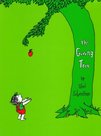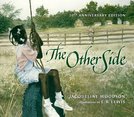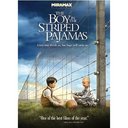Unit 1: What Is Friendship? The Meaning and Importance
Essential Questions:
- What are the traits of a “good” friend?
- How do I want my friends to treat me? How do I treat my friends?
- Can people who are different than me be my friend?
- How do I treat people who aren’t my friends?
- What are some of the difficulties in friendships?
- How do social pressures affect my friendships?
Materials Needed:
- Copies of The Outsiders for each student
- Computer access to create wordclouds
- Art supplies to create wanted ads (paper, glue, tape, construction paper, markers, crayons, scissors etc.)
- Overhead projector and markers
- Chalkboard/chalk or Whiteboard/markers
Standards:
Reading:
2. Determine a theme or central idea of a text and analyze its development over the course of the text, including its relationship to the characters, setting, and plot; provide an objective summary of the text.
4. Determine the meaning of words and phrases as they are used in a text, including figurative and connotative meanings; analyze the impact of specific word choices on meaning and tone, including analogies or allusions to other texts.
5. Compare and contrast the structure of two or more texts and analyze how the differing structure of each text contributes to its meaning and style.
7. Analyze the extent to which a filmed or live production of a story or drama stays faithful to or departs from the text or script, evaluating the choices made by the director or actors.
2. Determine a theme or central idea of a text and analyze its development over the course of the text, including its relationship to the characters, setting, and plot; provide an objective summary of the text.
4. Determine the meaning of words and phrases as they are used in a text, including figurative and connotative meanings; analyze the impact of specific word choices on meaning and tone, including analogies or allusions to other texts.
5. Compare and contrast the structure of two or more texts and analyze how the differing structure of each text contributes to its meaning and style.
7. Analyze the extent to which a filmed or live production of a story or drama stays faithful to or departs from the text or script, evaluating the choices made by the director or actors.
Speaking & Listening:
2. Analyze the purpose of information presented in diverse media and formats (e.g., visually, quantitatively, orally) and evaluate the motives (e.g., social, commercial, political) behind its presentation.
5. Integrate multimedia and visual displays into presentations to clarify information, strengthen claims and evidence, and add interest.
2. Analyze the purpose of information presented in diverse media and formats (e.g., visually, quantitatively, orally) and evaluate the motives (e.g., social, commercial, political) behind its presentation.
5. Integrate multimedia and visual displays into presentations to clarify information, strengthen claims and evidence, and add interest.
Writing:
2. Write informative/explanatory texts to examine a topic and convey ideas, concepts, and information through the selection, organization, and analysis of relevant content.
b. Develop the topic with relevant, well-chosen facts, definitions,
concrete details, quotations, or other information and examples.
7. Conduct short research projects to answer a question (including a self-generated question), drawing on several sources and generating additional related, focused questions that allow for multiple avenues of exploration.
8. Gather relevant information from multiple print and digital sources, using search terms effectively; assess the credibility and accuracy of each source; and quote or paraphrase the data and conclusions of others while avoiding plagiarism and following a standard format for citation.
9. Draw evidence from literary or informational texts to support analysis, reflection, and research. a question, drawing on several sources and refocusing the inquiry when appropriate.
2. Write informative/explanatory texts to examine a topic and convey ideas, concepts, and information through the selection, organization, and analysis of relevant content.
b. Develop the topic with relevant, well-chosen facts, definitions,
concrete details, quotations, or other information and examples.
7. Conduct short research projects to answer a question (including a self-generated question), drawing on several sources and generating additional related, focused questions that allow for multiple avenues of exploration.
8. Gather relevant information from multiple print and digital sources, using search terms effectively; assess the credibility and accuracy of each source; and quote or paraphrase the data and conclusions of others while avoiding plagiarism and following a standard format for citation.
9. Draw evidence from literary or informational texts to support analysis, reflection, and research. a question, drawing on several sources and refocusing the inquiry when appropriate.
Partner Texts:
The Giving Tree by Shel Silverstein:
This short story will serve as an introduction to the unit on friendship; students will explore what friendship meant to them in childhood, and how it has evolved throughout growing up. An important theme will be to examine selfishness/selflessness in friendship.
The Other Side by Jaqueline Woodson:
Another short story to be used in the introduction to this unit, where students will explore the difficulties and strains on friendship. This story will introduce difficult topics such as race and privilege in relationships.
The Boy in the Striped Pajamas- Film:
This film will be used to compliment reading The Other Side- it will allow students to analyze a film that portrays great difficulty in friendships, but also examines personal/cultural differences and how those can be accepted and appreciated in friendship.
The Outsiders by S.E. Hinton:
This novel will provide our foundation text for the unit on friendship. The plot and characters in this novel will allow students to explore the following themes: the bonds of friendship, peer pressure, enemies, personal sacrifice for friends, secrets, "codes" of friendship.
Formative and Summative Assessments to Include:
1. Defining Friendship:
This assessment will begin as a formative assessment that asks students to do informal interviews/surveys to collect ideas on what others think about "friendship". As a class we will compile all of the students' results into a wordcloud (see Figure 1.1 below), which we will then use as a reference for the remainder of the unit.
An ongoing portion of this assessment will be to have students work together to create similar wordclouds for each text they encounter in the unit. We will then be able to compare and contrast our students' wordcloud to the results of themes we see in our novels.
This assessment will begin as a formative assessment that asks students to do informal interviews/surveys to collect ideas on what others think about "friendship". As a class we will compile all of the students' results into a wordcloud (see Figure 1.1 below), which we will then use as a reference for the remainder of the unit.
An ongoing portion of this assessment will be to have students work together to create similar wordclouds for each text they encounter in the unit. We will then be able to compare and contrast our students' wordcloud to the results of themes we see in our novels.
2. Role-playing:
This formative assessment will be implemented while students are working with the texts, and will draw on situations both from the novels as well as real life. Students will be given scenarios about social/peer pressures occurring in their lives, and they will work in groups to discuss potential solutions and consequences. This will ask students to look at social situations through the eyes of certain characters in the novels, as well as giving their personal input.
We will then come back together and compare and contrast the different groups’ ideas and discuss the potential consequences (both positive and negative) of their suggestions.
This formative assessment will be implemented while students are working with the texts, and will draw on situations both from the novels as well as real life. Students will be given scenarios about social/peer pressures occurring in their lives, and they will work in groups to discuss potential solutions and consequences. This will ask students to look at social situations through the eyes of certain characters in the novels, as well as giving their personal input.
We will then come back together and compare and contrast the different groups’ ideas and discuss the potential consequences (both positive and negative) of their suggestions.
3. Wanted Ads:
This activity will include both beginning and post assessments, where students will write “wanted” ads to describe their ideal friends (traits they admire in a friend, traits they wish to avoid, types of activities they would want to do together etc.). They will create these descriptions at the very beginning of the unit, and at the end of the unit they will create another wanted ad, and then we will compare their final version to their first version.
4. Analyzing Friendships in Media:
As a summative assessment, students will conduct a verbal compare/contrast, in-class discussion to reflect on the many different examples of friendship we have seen through the texts.
In addition, students will be asked to conduct a mini-research project based on models of friendship they have seen in popular media. They will choose two examples of friendship (from movies, television shows, novels, fairy tales etc.), and write a short reflection on which friendship they find more fulfilling and why. This will ask students to use concrete examples of what happens to the friendships they choose, and express their ideas in an informal essay.
After completing this writing assignment, students will bring their compare/contrast writing samples back to class, and they will share-out in small groups. Sharing with their peers will allow them to reflect on more models of friendship, and to defend/articulate their own opinions to others.
This activity will include both beginning and post assessments, where students will write “wanted” ads to describe their ideal friends (traits they admire in a friend, traits they wish to avoid, types of activities they would want to do together etc.). They will create these descriptions at the very beginning of the unit, and at the end of the unit they will create another wanted ad, and then we will compare their final version to their first version.
4. Analyzing Friendships in Media:
As a summative assessment, students will conduct a verbal compare/contrast, in-class discussion to reflect on the many different examples of friendship we have seen through the texts.
In addition, students will be asked to conduct a mini-research project based on models of friendship they have seen in popular media. They will choose two examples of friendship (from movies, television shows, novels, fairy tales etc.), and write a short reflection on which friendship they find more fulfilling and why. This will ask students to use concrete examples of what happens to the friendships they choose, and express their ideas in an informal essay.
After completing this writing assignment, students will bring their compare/contrast writing samples back to class, and they will share-out in small groups. Sharing with their peers will allow them to reflect on more models of friendship, and to defend/articulate their own opinions to others.





